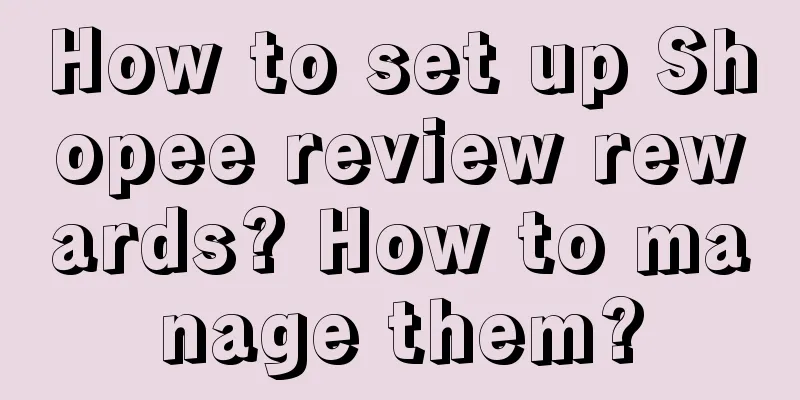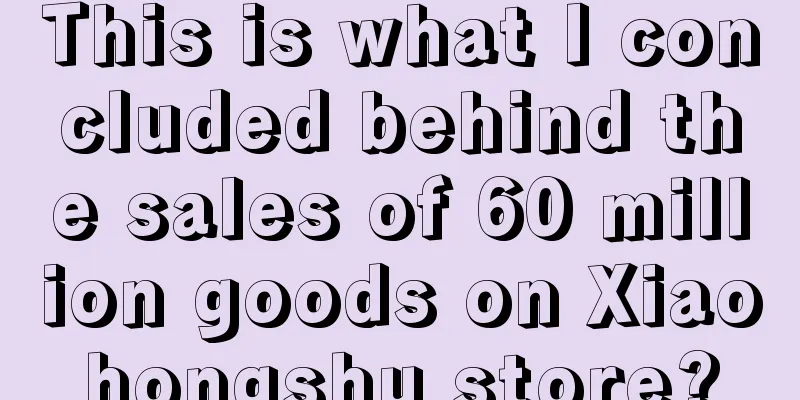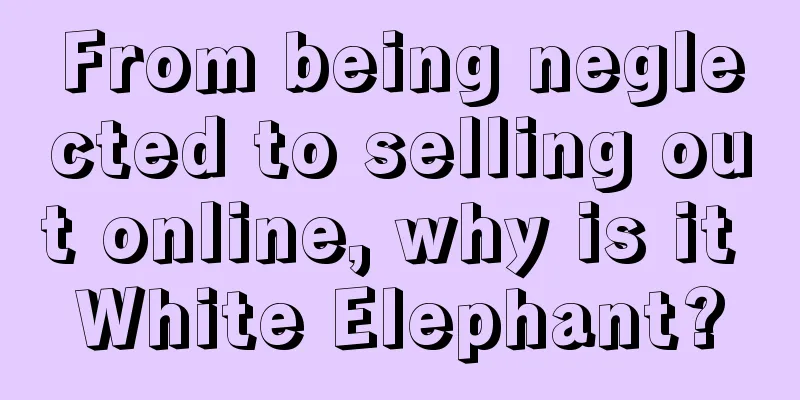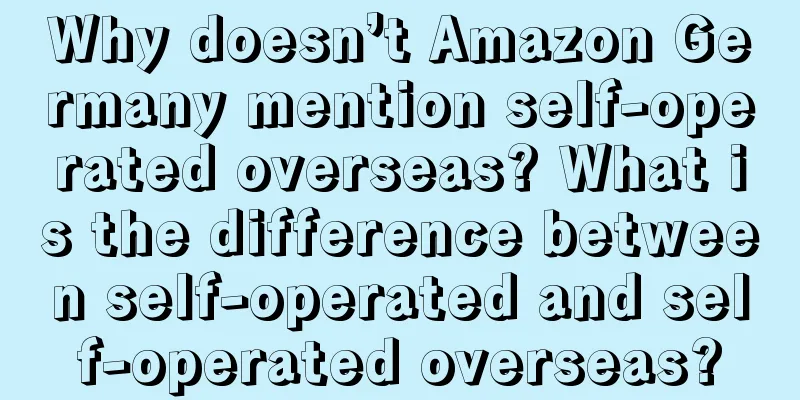Brand No. 1: Spend money to grow, how?
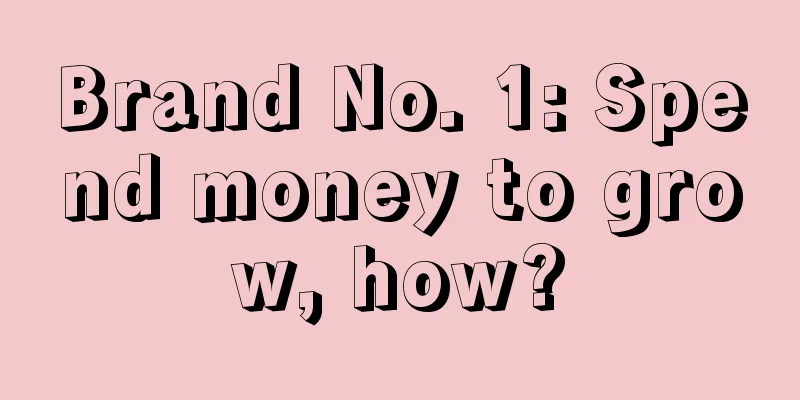
I often hear Mr. Jiang Nanchun talk about spending money on advertising to achieve growth in various forums. Then, he uses several successful cases of investing in targeted media to prove his point. Does investing in advertising and spending money necessarily lead to brand or corporate growth? After that, it may not be the result of this. Did all brands that invested in Focus Media and advertised grow? Obviously, common sense tells us that it should not be. If the certainty between advertising and growth is so strong, then there is no need for Mr. Jiang Nanchun to preach about it everywhere. This is unscientific and uneconomical. Why do some brands not grow despite spending a lot of money on advertising? Of course, Mr. Jiang Nanchun will not talk about those brands that have invested in Focus Media but have not grown (in fact, there must be some). Because the language of entrepreneurs first serves their own business - this is human nature. Why do some companies invest in advertising, spend money, and achieve growth, while others simply lose everything? 1. Understanding the two types of communicationInterpersonal Communication and Mass CommunicationWhy some brands can bring growth after advertising, while others cannot? The core of the problem lies in whether the advertising triggers the diffusion effect from mass communication to interpersonal communication. The characteristic of mass communication is rapid coverage (you can narrowly understand it as advertising), because it can spread information to the audience widely. Interpersonal communication is two-way and feedback-based, and plays a role in changing individual concepts. A company's marketing and advertising budget is always limited, especially compared to a large national market. Few companies can afford such a large (national coverage) marketing cost. So in this process, communication must become broadcast + communication to play a role in ignition. That is, mass communication blows the whistle, and interpersonal communication ignites the fire. If we understand it in terms of content creation, it is UGC+PGC. Through brand publicity, it drives individual interpersonal communication. Interpersonal communication is two-way and feedback-based, and can play a role in changing individual concepts during the persuasion stage (diffusion requires five stages: cognition, persuasion, decision-making, implementation and confirmation). After understanding the synergy between mass communication and interpersonal communication, a key question is answered. The effect of advertising is to stimulate the occurrence of interpersonal communication, only in this way can it trigger broad coverage. Interpersonal communication has very important word-of-mouth, demonstration, and imitation effects. I will not accept any gifts during the Chinese New Year this year. If I do accept any gifts, I will only accept Melatonin. How much of this sentence has been heard by you through advertising fees, and how much through interpersonal communication? How much of this sentence has been heard by you through advertising fees, and how much through interpersonal communication? Relying on advertising is only a sufficient condition, but if the advertising fails to cause interpersonal communication effects, then it can only continue to be a waste of money. The question is how many companies can continue to be a waste of money. Therefore, what is the role of spending money on advertising? After reading this, you may have some ideas - Oh! So that's it. 2. Stimulate two forces1. Opinion leader effectThere are always some people in life who are willing to share their attitude towards brands and product experience with people around them. They are usually not only good at socializing, but also have certain expert attributes in a certain field. This type of people usually have a greater influence in a small circle. The opinion leader effect is manifested in the reputation of products and brands. Of course, this reputation includes both positive and negative. How to exert the opinion leader effect is to make these people become your wild salesmen. You can call them die-hard fans, or you can empower them as super users through organizations, or you can give them a stage through communities. They are usually the first and second types of people mentioned in the innovation diffusion theory (innovators and early adopters). In the early days of Xiaomi, they were the first batch of Xiaomi fans. Innovators and early adopters usually have the quality of leading opinions. Innovators, adventurous innovators, are the "gatekeepers" of new ideas and technologies, with financial resources and technical knowledge. Although they are a small proportion in society, their adventurous spirit is crucial. Early adopters are equivalent to opinion leaders in society. They have higher education and social status. They can guide public opinion, become role models for others to learn from, and accelerate the spread of innovation. Three principles for the opinion leader effect: products must be explicit, unified, and unique.
2. Create a theatrical effectThe 5 Laws of Drama:
The dramatic effect of consumption: the symbolization of consumption, or symbolic consumption. The implicit information beyond the product transmitted through symbols is more or less a latent demand of consumers in the consumption process. Including: price information, cultural preferences, social class and many other information hidden behind the products and attached to the symbols. Huang Bo said in Crazy Stone: brand, Baleno (turning a pretty good second-tier brand into a brand in the urban-rural fringe). The more externalized a brand is, the more symbolic its consumption becomes. Expensive does not necessarily have to be justified, but it must be known to people. LV, Moutai, and Zhonghua cigarettes have made their expensiveness known to everyone, so people will naturally consume when it is time to consume. You do not need to teach consumers to understand what is dramatic, and you do not need to explain why it is expensive. You play your part well, and when it is time for them to perform, they must pay to "invite" you to perform. For example: 8848 and Xiaoguan Tea are also like this. Everyone knows that they are expensive, and the rest is waiting for success. From this perspective, Mr. Du knows the truth. He consistently markets not demand but desire - the desire for consumption and "dramatic" display. If everyone knows that they are expensive, consumption will come naturally. Rolls-Royce only sells a few hundred units in China every year. If it follows the logic of Internet traffic and precise delivery, it can be delivered to these few hundred people. In fact, no, if you want to sell to these few hundred people, you must let hundreds of millions of people know. When everyone in the world knows that you are expensive, customers will come to your door and consumers will come uninvited - this guy is rich and drives a Rolls-Royce, so you can't go wrong by following him. Price itself is a signal. In the context of consumer drama, it is the greatest truth to only buy expensive things - it brings the greatest efficiency in social interaction. I don't need to say anything to you, and I save a lot of self-introduction. Come and see what watch I wear and what car I drive. Do I need to waste more words? This is so efficient. Selling a product at a high price is a process of socializing the product and symbolizing consumption. From this perspective, Xiao Guan Tea is still sold at a low price. The more expensive it is, the better it sells. When giving gifts, are you afraid that others will know the price is high? You are afraid that the other party will not know it. 3. Make good use of 4 methods1. Unsatisfied stateThe state of being unsatisfied is a psychological norm. The nouveau riche mentality is the release of retaliatory consumption after long-term suppression of demand. When physiological needs are met, safety needs are met, social needs are met, social needs are met, self-esteem needs are met, and self-practice needs are met. This is called: when you are well fed and clothed, you think about lust, and when you are poor and humble, you think about stealing. 2. Scene stimulationScenes stimulate sales potential. Festivals are big scenes, and big scenes stimulate big potential. The 5,000-year cultural history has left us with precious cultural scenes: New Year's Eve is the first, August 15th is the second, and Dragon Boat Festival is the third. When people enter a specific scene, they will be stimulated to have specific needs. Eating dumplings, moon cakes, and rice dumplings, you can't eat that feeling after that day. Double 11 is a man-made scene. On 11.11, if you don't buy something, you feel like you've suffered a great loss. In fact, you haven't suffered any loss. The scene atmosphere pushes you to buy, buy, and buy. 3. Manufacturing, comparison effect
Everyone has a desire for a better life and career, and envy. Those who are far away from it can only stop there. Although they cannot achieve it physically, they yearn for it in their hearts. When they envy him and not themselves, it becomes jealousy. Sometimes you have no other intentions, but he is just jealous of you, jealous that you are rich, have a car, and have talent. In fact, these have nothing to do with him, but he just thinks that you have "robbed" his things, his money, his car, and his talent. Creating a comparative effect is often used in competitive advertising, copywriting or publicity. condition: 1) Mature categories 2) Consumers have a clear perception and recognition of the attributes and characteristics of the category during the continuous consumption process 3) The comparison anchor point is measurable, perceptible, and quantifiable.
4. Presentation, cognitive dissonanceCognitive dissonance: When the worldview, cognition, customs, and logic of the outside world conflict with existing cognition, imbalance and maladjustment will occur. By affecting cognition, it can bring about an "imbalanced" state, thereby inducing behavior. Cognitive and aesthetic needs are Maslow's later supplement to the hierarchy of needs theory. Interpretation and understanding phenomena accompany people throughout their lives. When individuals realize that there is a contradiction between their attitudes and behaviors, cognitive dissonance occurs. Festinger's insufficiently rationalized experiment: the subject was asked to do a boring winding job for 1 hour. When he left the studio, the experimenter asked him to tell the "subject" (actually the experimental assistant) waiting outside to participate in the experiment that the winding job was interesting and attractive. For this, the lying subject would receive a reward. Then the experimenter asked him to fill out a questionnaire to understand his true attitude towards the winding job. The results showed that the subjects who were paid more still had a low attitude towards the wire winding job, while the subjects who were paid less, on the contrary, improved their evaluation of the wire winding job and began to like it - that is, the subjects who were paid less liked the wire winding job more than the subjects who were paid more. This situation is called attitude change caused by cognitive dissonance under insufficient rationalization conditions. Consumers are both the starting point and the end point of advertising. Advertising must complete the entire process from attracting attention, generating interest, stimulating desire, and promoting action. Lewis proposed the AIDMA theory: the five stages of consumers from exposure to information to the final purchase: attracting attention - stimulating interest - arousing desire - leaving memory - purchasing action. By presenting cognitive dissonance, you can achieve the goal of attracting attention and stimulating interest. There are four ways to attract attention by creating cognitive dissonance:
Author: Houshan Keju; Source public account: Laogao Business and Brand (ID: 904085) |
<<: With their stingy daily lives, the dark horse couple makes money on the Internet
>>: How does Pinduoduo test images, models and links?
Recommend
What are the cross-border e-commerce operation and promotion strategies? How to promote well?
The cross-border e-commerce industry has been deve...
How many points will be deducted from Shopee before the account is frozen? What actions on Shopee will cause points to be deducted?
When opening a store on an e-commerce platform, me...
How to refund Amazon import tax? Introduction to the tax refund process
When doing cross-border e-commerce, you must under...
Why have top internet celebrities collectively fallen out of favor recently?
This article introduces the quality control proble...
12,000 words to interpret Luckin Coffee's joint marketing strategy: Special Forces in the Traffic Pool
As the traffic king this year, do you understand t...
Every department exceeded their targets, so why didn’t the CEO
It starts with a scenario of CEO anxiety and quick...
What do the hot-selling products on Pinduoduo look like?
In the fiercely competitive e-commerce market, how...
Does Amazon's vacation mode affect traffic? What are the precautions?
For Amazon merchants, they need to do a good job o...
What are the three ways to place Amazon manual ads?
Amazon's ads are divided into two types: manua...
How to place Amazon SD ads? Introduction to placement modes
If Amazon merchants want to set up SD ads, they ca...
315 exposes the game within the game, scammers are eyeing live streaming
The author of this article uses the live streaming...
How does Amazon charge a collection fee? Fee Standards
As an e-commerce platform, Amazon charges a certai...
Is PayPal identity verification reliable? How long does it take?
Those who do cross-border e-commerce know that ope...
Can Amazon UK deliver without VAT? Is there a grace period?
There are currently many merchants opening stores ...
Many millions of food accounts have stopped updating
The core of the difficulty in monetizing food acco...




